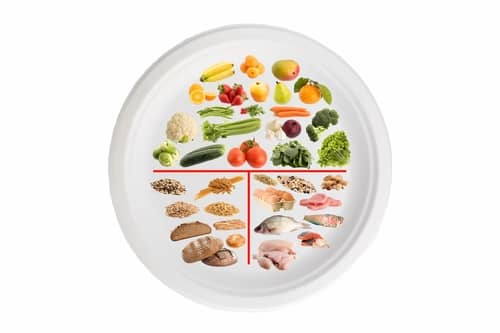A Simple Guide To Portion Control
e know that we need to watch our portions but what exactly…

We know that we need to watch our portions but what exactly is a portion? While the most exact way of ensuring correct portion size is to measure food served using scales, measuring cups and spoons, nutritionists agree that there may be a few simpler but more sustainable way of estimating portions.
One of these methods is the Plate method in which you can use your plate as a guide. This method is commonly used in western countries but it often does not include African food. Fortunately, African food can fit in the Plate method and it is very simple to follow.
The Plate Method
Start by making half your plate fruits and vegetables. Include more vegetables than fruit and be sure to add colour by serving a wide variety of produce. You will need a plate that measures 9 inches across. This step is important because using a larger plate may result in you overestimating your portion sizes.
Similarly, while it may be tempting to use a smaller plate for really small portions, this may result in you eating fewer calories than needed for good health.
Vegetables to consider include leafy greens such as spinach (eru/okazi), African spinach (efo tete), pumpkin (ugu), jute (ewedu/ayoyo), amaranth, cassava, bitter leaf (Onugbu/Ewuro/shuwaka/etidot), okra, eggplant/ aubergine, carrots, fresh peas and green beans.
Fruits to consider include mango, guava, apple, banana, pineapple, tamarind, orange, pawpaw, watermelon, and soursop.
Fill ¼ of your plate with whole grains, roots, and tubers. These can be eaten whole, pounded (as in fufu).
Grains to consider include sorghum, millet, rice, and maize.
Roots and tubers: Cassava, plantain, cocoyam, yam, sweet potato
Finally, fill the last ¼ of your plate with protein foods such as chicken, fish, lamb, goat, beef, pork and bush meat. Remember to eat red meat no more than twice a week.
Animal products such as eggs, milk, cheese, and yogurt also fit in this portion.
Legumes, nuts, and seeds like beans, cowpeas, dried peas, Barabara nut, and groundnut also make excellent low-fat selections.
Complete your meal with a glass full of water or milk. If you are unable to tolerate milk, be sure to include a good source of protein such as dried fish eaten with the bones, leafy green vegetables, and dried beans.
Beyond weight watching, portion control is an essential part of any healthy eating plan. Following the plate method will ensure that you get the vital nutrients you need to thrive and stay healthy.
Here’s to your health!



